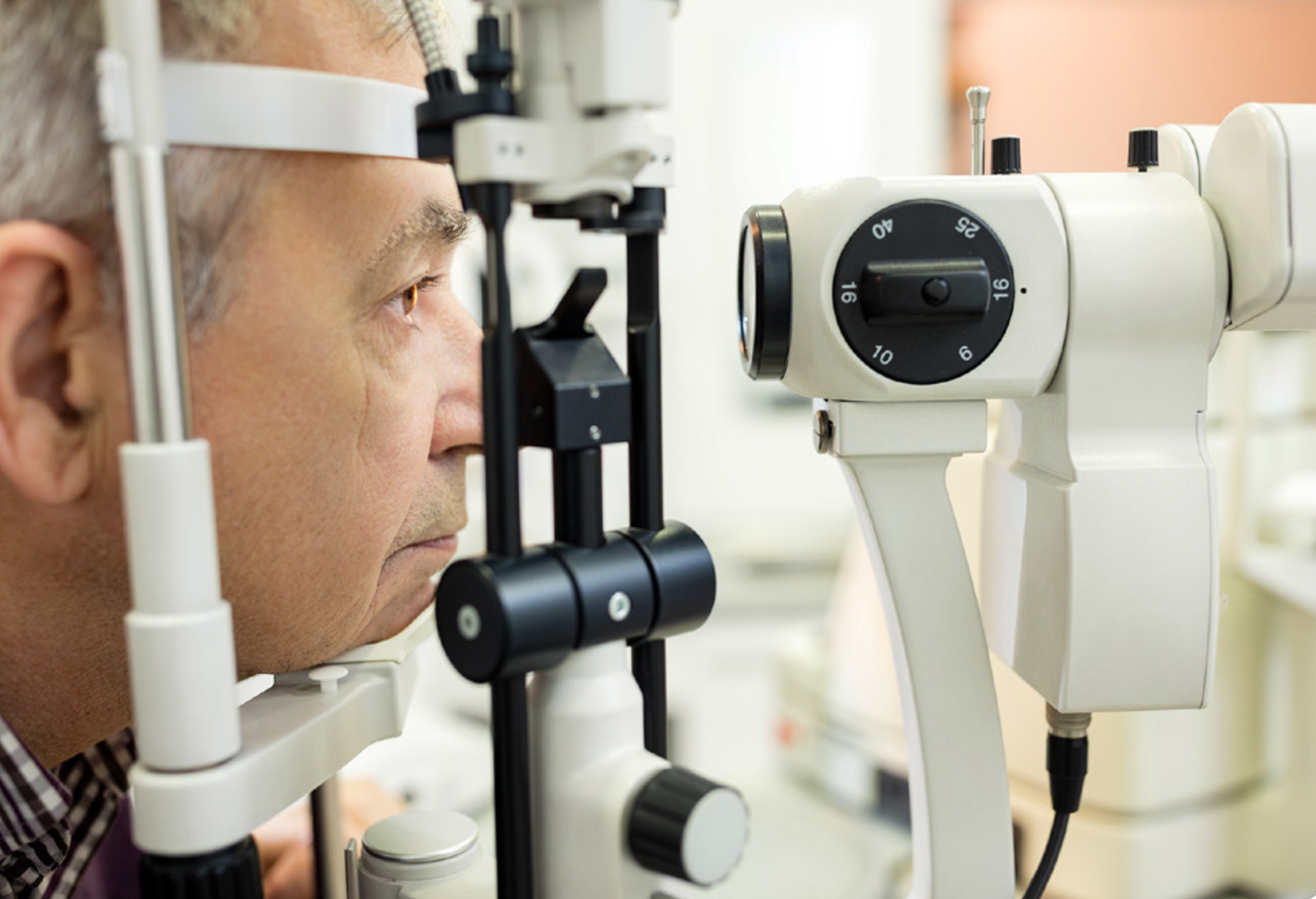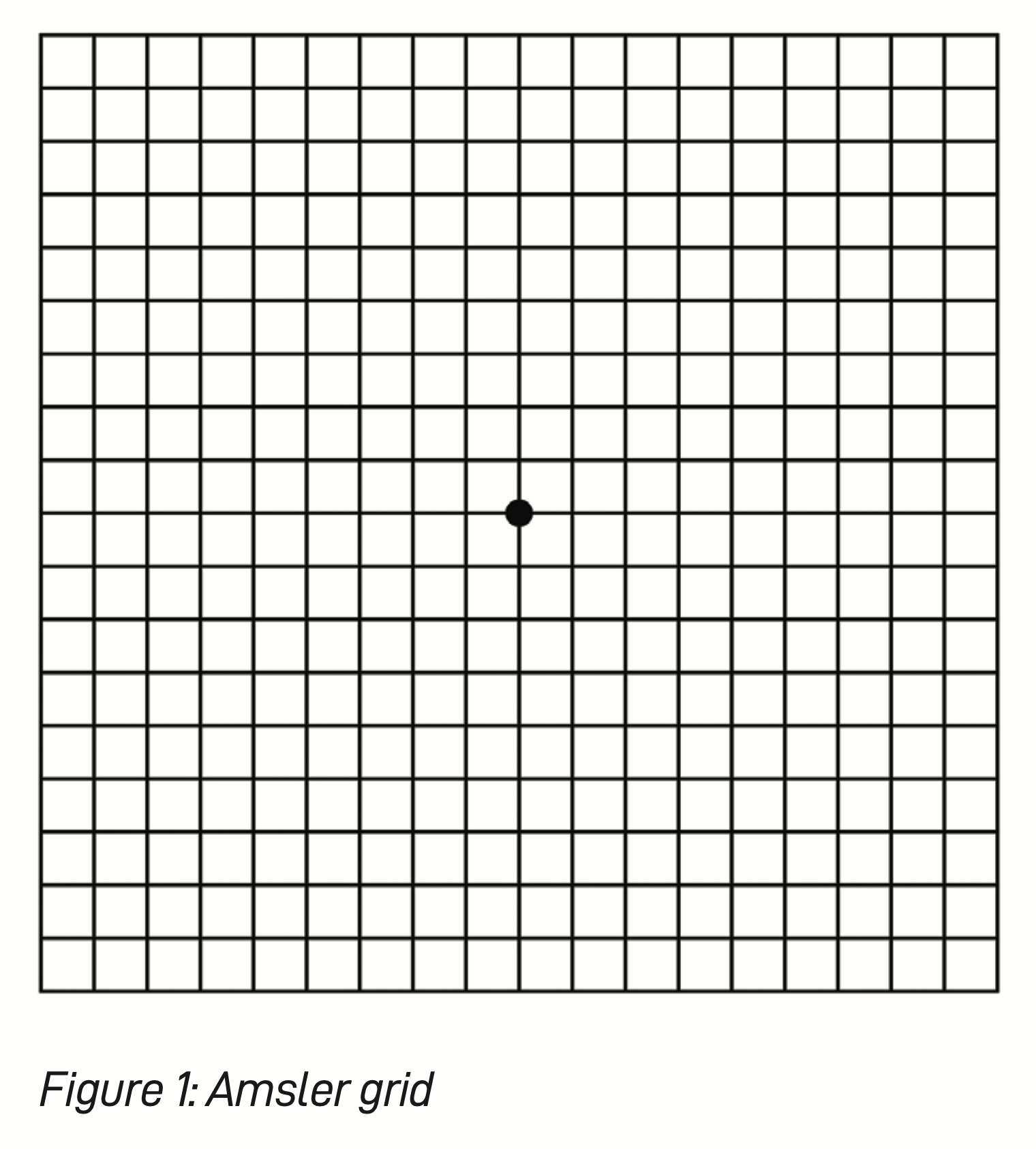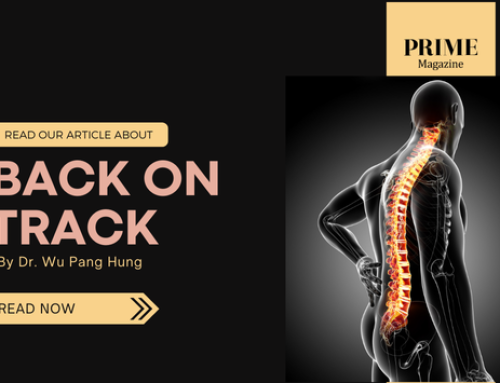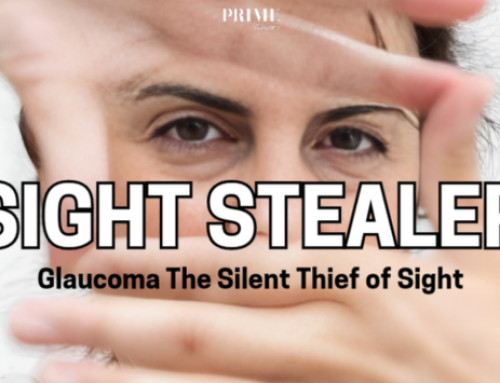Age-Related Macular Degeneration (AMD) is an increasingly common disease due to improved life expectancy and ageing populations across the globe. About eight million people worldwide have become blind due to late forms of AMD. Prevention, early detection and timely treatment are vital in guarding against blindness from AMD.

WHAT IS AMD?
The human eve is like a camera system. The retina, a light sensitive layer at the back of the eye, can be compared to the film of a camera. It captures light that enters the eye and sends information to the brain, which processes the images we see. AMD is a chronic and progressive disease that affects the most important area of the retina that provides central vision – the macula. It can occur in one or both eyes.
There are two types of AMD: dry AMD and wet AMD. In the majority of AMD patients, early dry AMD is seen. This occurs when waste material builds up under the retina. These patients usually do not notice any symptoms. The accumulation of waste products can result in the gradual degeneration of the retina. This stage is called advanced dry AMD. Patients with advanced dry AMD will experience gradual loss of central vision.
However, damage to the retina is more commonly caused by fluid leakage or bleeding from abnormal blood vessels that grow under the retina. This is known as wet AMD. Patients with wet AMD will notice a more sudden loss of central vision.
In Singapore, about five out of 100 people have early dry AMD, while one in 200 people have late forms of AMD. Late AMD refers to either wet AMD or advanced dry AMD. Wet AMD is, by far, the more common form of late AMD seen in Singapore.

CAUSES AND RISK FACTORS
The exact cause of AMD is unknown, but it is associated with a number of risk factors. The chances of a person developing AMD become higher as they age. One in every four individuals over 80 years old will have some form of AMD. Genetic factors also have a role to play in determining a person’s likelihood of developing this disease.
Smoking is, however, the most notable modifiable risk factor. A smoker is four times more likely to develop AMD and has a higher risk of progressing into late AMD as well.
SYMPTOMS
You may have early signs of AMD without noticing any symptoms. As the disease progresses, symptoms may include blurred vision, seeing a fixed grey or dark spot in your central vision, or having distorted vision (straight lines appear wavy). The Amsler grid (see Figure 1) is a quick and easy self- monitoring tool that can be used to detect changes in vision. If someone has AMD, the grid may appear to have wavy, missing or blurry lines/parts.

For those above 55 years of age, eye screening every 1-2 years is recommended. This can be done at community eye screening events, or at your optometrist/ophthalmologist.

DIAGNOSIS
AMD is diagnosed through an examination by an eye health professional. During the examination, you may be given eyedrops to dilate your pupils. Your retina will be examined for AMD. A series of other tests may also be used to aid diagnosis, including retinal photography, optical coherence tomography and retinal angiography.
PREVENTION
Prevention, early detection and timely treatment are vital in guarding against the risk of vision loss from AMD. As smoking is a major risk factor in the development of AMD, smoking cessation will not only prevent the development of AMD, it can also slow down the worsening of a person’s AMD. Nutrition also plays an important part in AMD prevention. Nutrients, such as lutein and zeaxanthin (these can be found in green leafy vegetables), and omega-3 fatty acids in fatty fish, have also been proven to slow down progression of AMD. These nutrients can be found in supplements containing the AREDS2 formula that you can get from pharmacies.
TREATMENT
Although there is no cure for AMD, there are highly effective treatment options for wet AMD that can help to prevent blindness. Unfortunately, there is no treatment available to treat dry AMD. Nevertheless, research is ongoing and more treatments are being developed.
Vascular endothelial growth factor (VEGF) is the main protein responsible for the growth of abnormal blood vessels in wet AMD. Injection of medication into the eye that blocks this growth factor (intravitreal anti-VEGF) is the standard and most effective treatment for wet AMD. Multiple injections are generally needed for effective treatment. Injections usually start at monthly intervals. The intervals between injections may then be extended depending on the response to treatment.
There are, however, risks associated with intravitreal injections, but these are rare. These risks include inflammation, infection or bleeding inside the eye, retinal tear or detachment, as well as increased pressure inside the eye.
In select cases, laser treatment may be used in addition to intravitreal anti-VEGF.











